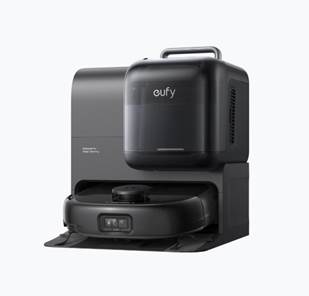Motion sickness is a
common issue for many travelers, often turning a pleasant journey into an
uncomfortable experience. The HONOR 400 aims to change that
with its innovative Motion Sickness Relief feature. This cutting-edge
technology promises to improve travel comfort, providing relief for those who
suffer from nausea during movement. Users can expect a more enjoyable ride, be
it on bumpy roads or turbulent flights. With a focus on personalization and
user-friendly setup, the HONOR 400 makes this feature accessible to everyone.
Leverage this solution to transform your travel experience and say goodbye to
uneasy journeys. Dive into the specifics of how this feature works, the
benefits it offers, and how it compares to other similar technologies on the
market.

What Is HONOR 400’s Motion Sickness
Relief Feature?
The Motion Sickness Relief feature
on the HONOR 400 is a novel addition that targets motion discomfort directly.
Utilizing advanced sensors and software, it aims to alleviate sensations that
trigger motion sickness, such as dizziness and nausea. This is achieved through
a blend of adaptive technologies that create a stabilizing effect during
transit.
Core Functionality of the Feature
The core functionality centers on
the integration of HONOR 400’s advanced motion sensors with intelligent display
adjustments. By dynamically modifying screen orientation, brightness, and
refresh rate in response to user movement, the device maintains alignment
between visual cues and the inner ear’s vestibular signals. This
synchronization significantly reduces the sensory conflict responsible for
triggering motion sickness during prolonged use.
How HONOR 400 Sensors Work to
Reduce Discomfort
HONOR 400’s sensors track motion
and orientation in real-time. The gyroscopic and accelerometer data are
utilized to adjust visual elements on the device, ensuring that what users see
matches what they feel. This synchronization reduces the brain’s confusion,
diminishing feelings of vertigo and nausea. Furthermore, the technology
intelligently anticipates movement, making preemptive adjustments for smoother
transitions and enhanced comfort.
How to Activate and Customize the
Feature
Activating the Motion Sickness
Relief feature on your HONOR 400 is straightforward. Users can follow a simple
setup process to enjoy smoother journeys without discomfort.
Step-by-Step
Setup on HONOR 400
Start by accessing the settings
menu on your HONOR 400. Scroll to the Motion Sickness Relief option and turn it
on. Follow on-screen instructions to calibrate the sensors based on your
preferences — adjustments can be made for sensitivity and intensity of the
relief measures. Complete the setup by saving your personalized settings.
Tips to Personalize the Settings
for Maximum Comfort
Personalizing the feature ensures
optimum effectiveness. Start by adjusting sensitivity settings according to
your susceptibility to motion sickness. If you are highly sensitive, a higher
setting may be beneficial. The lighting can also be customized to match
environmental conditions, reducing strain and promoting relaxation. Regularly
update the calibration as needed, especially if you’re beginning a different
mode of travel, for consistent results.
User Experiences and Expert Insights
Users and tech experts alike have
shared promising feedback regarding the HONOR 400’s Motion Sickness Relief
feature.
Real Stories from Frequent Travelers
Many travelers have noted a
significant reduction in nausea and dizziness while using this feature. One
frequent flyer mentioned that long-haul flights became more bearable thanks to
the personalized settings that adapt to different phases of flight turbulence.
Commuters on daily train rides have also found relief, with lessened discomfort
during sudden stops and starts.
Tech Experts Weigh In on Effectiveness
Tech experts applaud the
integration of sensors and adaptive technology. According to industry analysts,
HONOR 400’s approach sets a new benchmark for similar technologies. The
feature’s ability to predict movement and adjust the user’s experience in real-time
has been highlighted as particularly effective in mitigating motion sickness
symptoms. Experts suggest that while not an all-encompassing solution, it
greatly alleviates discomfort for a significant number of users.

Comparing HONOR’s Feature with
Competitors
When compared to competitors, HONOR
400’s Motion Sickness Relief stands out for its seamless integration and
effective personalization. While other devices may offer similar features, they
often lack the nuanced control and real-time responsiveness seen in HONOR’s
offering. Competitors may rely on basic stabilization techniques, whereas HONOR
400 incorporates a holistic approach with its advanced sensors and customizable
settings. This distinguishes it as a leader in motion sickness technology,
providing a more comprehensive solution for users seeking relief.
Conclusion
The
HONOR 400’s Motion Sickness Relief feature is a significant advancement in
travel comfort. By combining cutting-edge sensor technology with customizable
user settings, it offers an effective solution to a common problem. User
testimonials and expert analyses validate its efficacy, making it a valuable
addition for those prone to motion discomfort. As it leads the way in this
aspect of mobile technology, the HONOR 400 ensures that travelers can focus on
their journeys rather than their discomfort. Embrace this game-changing feature
and enjoy your travels like never before.



